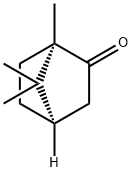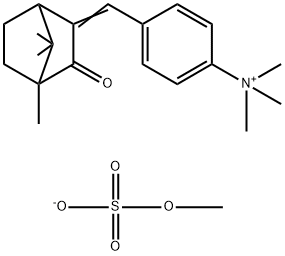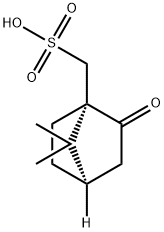D(+)-Camphor , 96% , 464-49-3
Synonym(s):
(+)-Camphor;(1R)-1,7,7-Trimethylbicyclo[2.2.1]heptan-2-one;2-Bornanone;2-Camphanone
CAS NO.:464-49-3
Empirical Formula: C10H16O
Molecular Weight: 152.23
MDL number: MFCD00064149
EINECS: 207-355-2
| Pack Size | Price | Stock | Quantity |
| 25G | RMB46.40 | In Stock |
|
| 100G | RMB81.60 | In Stock |
|
| 500G | RMB254.40 | In Stock |
|
| 2.5KG | RMB1142.40 | In Stock |
|
| others | Enquire |
PRODUCT Properties
| Melting point: | 178-182 °C (lit.) |
| alpha | D25 +41 to +43° (c = 10 in U.S.P. alcohol) according to U.S.P. specif |
| Boiling point: | 204 °C |
| Density | 0,99 g/cm3 |
| vapor density | 5.24 (vs air) |
| vapor pressure | 4 mm Hg ( 70 °C) |
| refractive index | 44.5 ° (C=20, EtOH) |
| FEMA | 2230 | D-CAMPHOR |
| Flash point: | 148 °F |
| storage temp. | 2-8°C |
| solubility | Slightly soluble in water, very soluble in alcohol and in light petroleum, freely soluble in fatty oils, very slightly soluble in glycerol. |
| form | Crystals |
| color | White |
| Odor | at 10.00 % in dipropylene glycol. camphor minty phenolic herbal woody |
| Odor Type | camphoreous |
| biological source | synthetic |
| explosive limit | 3.5% |
| optical activity | [α]25/D +44°, c = 10 in ethanol |
| Water Solubility | Soluble in water (0.1 g/L at 20°C). |
| Merck | 14,1732 |
| JECFA Number | 1395 |
| BRN | 2042745 |
| Stability: | Stable. Incompatible with strong reducing agents, strong oxidizing agents, chlorinated solvents. Protect from direct sunlight. |
| LogP | 2.3 at 20℃ |
| CAS DataBase Reference | 464-49-3(CAS DataBase Reference) |
| EPA Substance Registry System | D-Camphor (464-49-3) |
Description and Uses
(1R)-(+)-Camphor is a terpene that has been found in C. sativa, C. indica, and C. sativa/C. indica hybrid strains as well as the essential oils from a variety of herbs including rosemary, lavender, and sage and has diverse biological activities. It inhibits norepinephrine secretion and cytosolic calcium and sodium increases induced by the nicotinic acetylcholine receptor (nAChR) agonist 1,1-dimethyl-4-phenylpiperazinium iodide (DMPP) in chromaffin cells (IC50s = 70, 88, and 19 μM, respectively). (1R)-(+)-Camphor (65-260 μM) induces proliferation of and increases expression of collagen IA, collagen IIIA, collagen IVA, and elastin in human primary dermal fibroblasts. In vivo, (1R)-(+)-camphor increases expression of collagen IA, collagen IIIA, collagen IVA, and elastin in skin in UV-exposed mice when administered at doses of 26 and 55 mM in drinking water post UV-exposure. It reduces cough frequency in citric acid-challenged guinea pigs. (1R)-(+)-Camphor is insecticidal, reducing digging activity and inducing mortality of fire ant workers. It has also been used as a building block in the synthesis of cannabinergic ligands.
D-Camphor may be used as reference material for the quantification of the analyte in Saraca asoca and coriander using chromatography techniques.
Safety
| Symbol(GHS) |     GHS02,GHS05,GHS07,GHS08 |
| Signal word | Danger |
| Hazard statements | H228-H315-H318-H332-H371 |
| Precautionary statements | P210-P280-P302+P352-P304+P340+P312-P305+P351+P338-P308+P311 |
| Hazard Codes | F,Xn,Xi |
| Risk Statements | 11-22-36/37/38-20/21/22-36 |
| Safety Statements | 16-26-36-37/39 |
| RIDADR | UN 2717 4.1/PG 3 |
| WGK Germany | 1 |
| RTECS | EX1260000 |
| Autoignition Temperature | 870 °F |
| TSCA | Yes |
| HazardClass | 4.1 |
| PackingGroup | III |
| HS Code | 29142910 |




